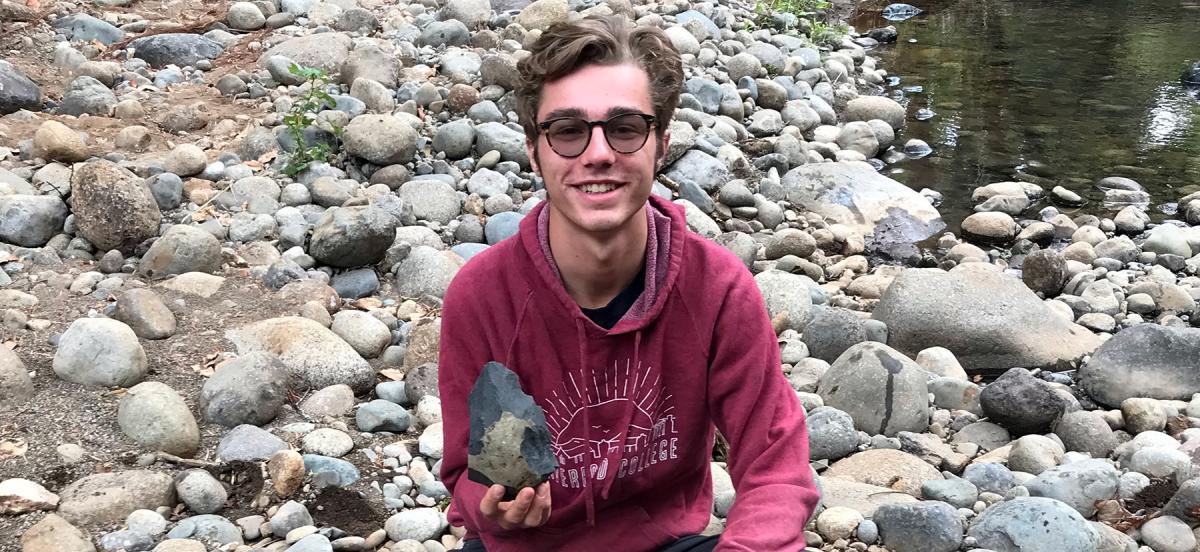Levi Raskin ‘24 Researches Human Evolution in the Field

Levi Raskin ‘24 holds a handaxe that he made.
Details
The anthropology major and biology minor studied human evolution and ecology in Kenya this summer.
For Levi Raskin ‘24, rather than a break, this summer was an opportunity to gain field experience. The Bryn Mawr anthropology major and biology minor studied at George Washington University’s Koobi Fora Field School, located in Northern Kenya, near Illeret, supported by the Deborah Lafer-Scher International Internship.
The Koobi Fora Field School is a six-week program in which graduate and undergraduate students gain experience conducting surveys and excavations. The program offers opportunities in paleoanthropology, paleolithic archaeology, and human biology. These studies look to provide insight about ecology and human evolution dating back two million years.
Raskin departed the United States on June 9, leaving behind cell service and internet connection completely. He studied at fossil formations on the eastern side of Lake Turkana, a lake crossing the border between Kenya and Ethiopia. He was joined in the program by 18 other students, a third of whom were from universities in Africa.
“Studying human origins drives me. Understanding how and why the modern human adaptive suite arose is fascinating,” Raskin said. “I am especially curious about the origins of stone tool usage and while Koobi Fora is not the earliest example of tool usage in the archaeological record—that would be Lomekwi, Kenya—Koobi Fora has a rich, densely concentrated, and well preserved archaeological record, which means it is uniquely well suited for work that requires studying a great number of stone tool— i.e., asking questions about associations between stone tool deposits and bones.”
This research is closely aligned with his on-campus research with Maja Šešelj, associate professor of anthropology at Bryn Mawr. Together, they study human biology and dental anatomy, and are currently researching how dental development can be used to map out an evolutionary lineage.
“[Humans] are seperated from chimpanzees because of bipedalism, large brain cases, parabolic dental arcades, etc. Does dental development distinguish between us and other apes with as much power?” he asked.
The Koobi Fora program was particularly attractive to Raskin because of its focus on hands-on research. Through it, not only has he gained experience presenting to a scientific audience at the school, but he has also gained insight into how useful field work is in anthropology, and how it can be used to advance research.
While he studies dental development with Šešelj on campus, at the Koobi Fora Field School, he worked with Max Planck Institute for Evolutionary Anthropology Postdoctoral Scholar Jonathan Reeves excavating a 1.5-million-year-old site. “The artifacts we found were then compared to experimental archaeological material—where we reproduced the early stone tools,” he said. “This process of experimentation, combined with archaeology, lets us make very specific claims about how these early stone tools were made, with implications for human evolution and the origins of culture.”
Raskin returned stateside in mid-August and will present his research at a fall anthropology conference hosted by George Washington University.
“Summer Centered” is a series exploring our students’ campus-supported summer work.



